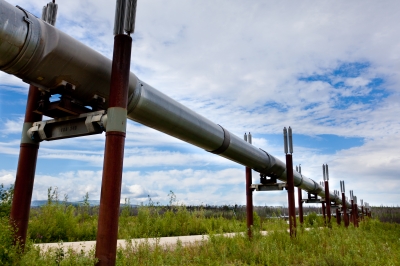Stocks across the energy sector have fallen on hard times this year. The price of crude oil in the United States recently fell below $40 per barrel. This is a massive decline from the high of over $100 per barrel seen just last year. As a result, profit margins are collapsing throughout the oil and gas industry. That being said, the midstream firms have done relatively well. These are companies like Kinder Morgan, Inc. (KMI ) that own and operate oil and gas pipelines and storage terminals.
Kinder Morgan’s cash flow has actually increased this year—because midstream businesses actually operate similarly to toll roads. Kinder Morgan (like others in the same business) collect fees based on the volumes of oil and gas transported and stored through its assets. As such, they are not entirely reliant on a supportive commodity price. This has provided valuable shelter from the collapse in commodity prices throughout the year, and has allowed Kinder Morgan to increase dividends.

Kinder Morgan Continues To Increase Dividends
Kinder Morgan owns and operates 84,000 miles of pipelines and 165 terminals, making it the largest midstream company in the United States. It recently increased its quarterly dividend to $0.51 per share, which was a 16% year-over-year increase. The annualized dividend of $2.04 per share represents a yield exceeding 8%. That is a very attractive yield and, fortunately, the company generates enough cash flow to sustain this yield, even at $40 oil.
Over the first nine months of 2015, Kinder Morgan’s distributable cash flow (DCF) rose 22% year-over-year. The biggest contributor to this is the company’s products pipelines and terminals businesses. Last quarter, the products pipelines and terminals segments grew earnings before depreciation and other items by 29% and 6%, respectively. Growth in these segments helped offset a 22% decline in earnings before depreciation and other items in Kinder Morgan’s carbon dioxide business, which does suffer from falling commodity prices.
Overall, Kinder Morgan generated $228 million of DCF in excess of its dividend payments through the first nine months of the year, which is why the company can continue growing its dividend.
Other Midstream Firms Also Increase Dividends
The success of the midstream model is paying dividends, not just for Kinder Morgan, but for many of its peers. For example, Enterprise Products Partners (EPD ) and Magellan Midstream Partners (MMP ) have each raised their own distributions this year, even as the price of oil continues to fall.
Enterprise Products reported record natural gas liquids, crude oil, petrochemical and refined products transportation last quarter. Crude oil volumes rose 13% while volumes of refined products and petrochemicals rose 9%. Distributable cash flow excluding asset sales grew 5% last quarter year-over-year—easily covering Enterprise Products’ distribution last quarter by 1.3 times, which implies sufficient distribution coverage. As a result, Enterprise Products raised its dividend for the 45th consecutive quarter.
Magellan’s large crude oil business grew operating profit by 45% last quarter year-over-year. Distributable cash flow rose 25% last quarter, largely due to higher tariffs and increased volumes of crude oil and refined products. This allowed Magellan to increase its distribution by 14% year-over-year in October—the 54th distribution increase since Magellan’s initial public offering in 2001. This is a testament to the long-term sustainable growth of midstream firms’ distributions.
The Bottom Line
Even though the price of oil has declined significantly this year, Kinder Morgan and other midstream businesses remain healthy. This is because demand has remained intact, and the need for energy infrastructure will only grow in the future.
Going forward, Kinder Morgan management expects to raise its dividend by 6%-10% in 2016, due to the company’s strong backlog of future growth opportunities. Kinder Morgan’s project backlog is now $23.1 billion, which should help generate enough growth in cash flow in future quarters to support an even higher dividend next year. As a result, income investors looking to generate yield should view Kinder Morgan favorably.
Image courtesy of puttsk at FreeDigitalPhotos.net





